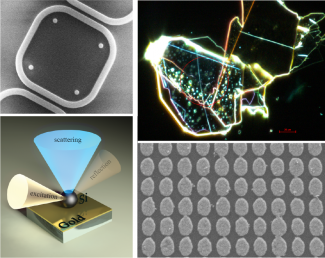Electromagnetic states in 2D nanostructures and materials

The new burst in the development of modern nanophotonics is associated to the rise of the concept of metasurfaces. Contrary to 2D metamaterials, optical metasurfaces are compatible with modern planar fabrication technologies and serve as an effective and versatile tool for manipulation of light at the nanoscale. Metasurfaces can be represented by 2D arrays of micro- and nanoparticles or other planar dielectric, semiconductor or hybrid structures.
This scientific direction developed in the laboratories of Faculty of Physics and Engineering is devoted mainly to the studies of surface optical states of metasurfaces, namely, to control of their dispersion and their selective directional excitation.
Metasurfaces gain new functionalities if they are integrated with 2D materials such as graphene or transition metal dichalcogenides (TMDC). The realization of strong coupling between exciton in 2D material and optical modes of the metasurface allows to control the spatial dispersion of the resulting hybrid quasiparticles - polaritons. In turn, the excitonic part of the quasiparticle leads to giant nonlinear effects.
These unique properties of hybrid 2D systems provides unprecedented flexibility that allows to address various applications such as production of active and passive elements for energy-efficient all-optical and optoelectronic devices.
Staff

Publications
There are no publications









